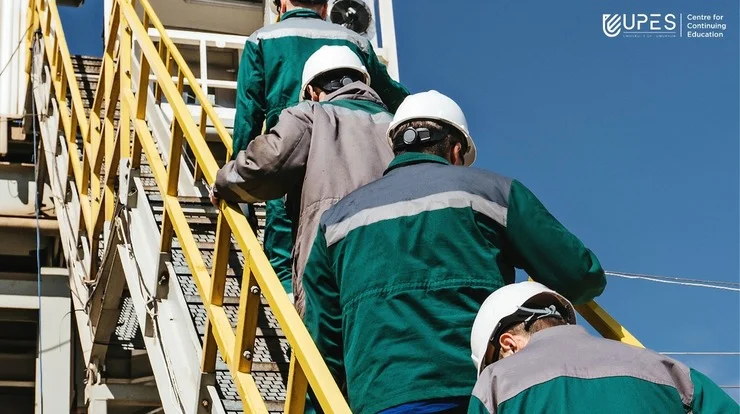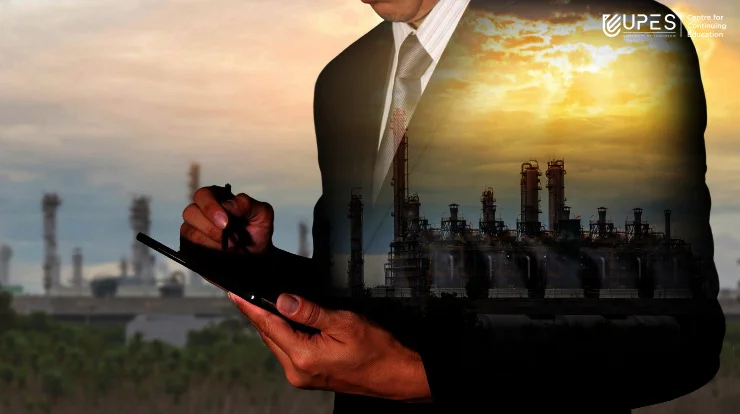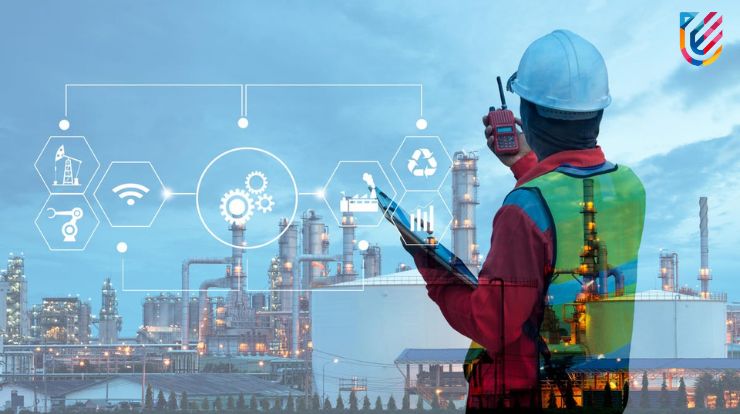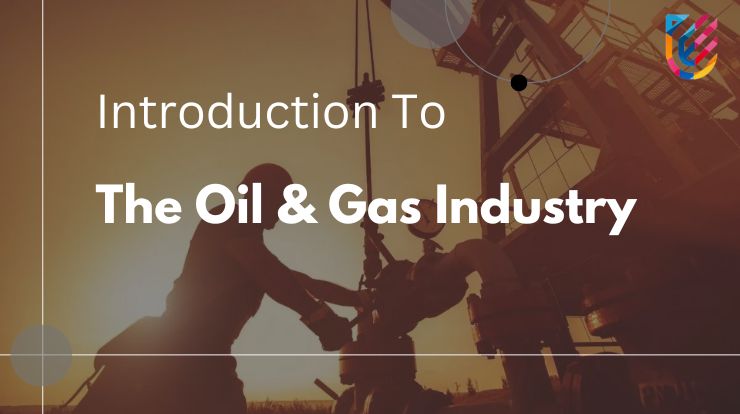Crack the Rig Code: Ace Oil & Gas Interview with Top Questions

Table of Contents
- Commonly Asked Questions
- Operations Questions
- Technical Questions
- Safety Interview Questions
Landing a job in this high-stakes industry feels like unearthing buried treasure, but before you start celebrating, you gotta ace the interview. To bring you some comfort– this guide is your map to navigating the interview maze, whether you’re a geology whiz or a tech wizard with an oil obsession.
Decode all “upstream vs. downstream” questions. We’ll break down the tricky stuff into bite-sized nuggets, leaving you feeling like a rockstar engineer, not a lost hamster in a maze of pipelines. Plus, we’ll sprinkle in some hilarious anecdotes (no roughnecks involved, promise!) to keep things light and entertaining.
So, grab your metaphorical hard hat and let’s drill down deep into the secrets of oil and gas interview mastery. We’ll have you talking tech lingo like “permeability” and “downhole pressure” faster than you can say “pipeline.” Just remember, stay cool under pressure, keep your wit sharp, and trust this guide to lead you to your dream job. Let’s get the interview started!
Commonly Asked Oil and Gas Interview Questions:
1. Explain your understanding of the upstream, midstream, and downstream sectors of the oil and gas industry?
Answer: Showcase your basic grasp of the industry’s value chain. Briefly explain how upstream activities involve exploration and production, midstream focuses on transportation and storage, and downstream deals with refining and marketing.
2. Describe the key properties of a good reservoir rock?
Answer: Highlight porosity (ability to hold fluids), permeability (ease of fluid flow), and pore pressure. Mention how these properties impact oil and gas recovery.
3. What are the main environmental considerations in the oil and gas industry?
Answer: Demonstrate your awareness of environmental concerns like spills, emissions, and habitat disruption. Briefly mention mitigation strategies like spill response plans and green technologies.
4. Discuss the impact of new technologies like horizontal drilling on reservoir production.
Answer: Go beyond basic knowledge! Analyze how horizontal drilling unlocks previously inaccessible reserves and increases recovery rates. Mention specific examples or case studies.
5. Tell me about a time you used data to solve a problem?
Answer: Even if it wasn’t related to oil and gas, share an example of using data analysis to solve a problem. This showcases your analytical skills and ability to draw insights from information.
6. What’s your understanding of safety procedures in oil and gas operations?
Answer: Show safety awareness. Briefly explain basic safety protocols like PPE usage, emergency procedures, and risk assessment practices.
7. How do you handle working in high-stress environments?
Answer: Demonstrate composure and stress management skills. Share an example of a time you effectively dealt with pressure in a previous role.

Operations & Situation Based Questions:
Master common scenarios, tackles tricky operations & situation-based questions, showcase critical thinking, and make kickstart your oil and gas career!
1. You’re overseeing drilling operations in a remote location and encounter an unexpected geological formation that could compromise well integrity. How do you handle this situation?
Answer (Professionals):
- Immediate Actions: Halt drilling, isolate the wellbore, and ensure crew safety. Secure the wellhead and activate emergency response procedures.
- Assessment and Analysis: Contact geologists, engineers, and drilling supervisors for immediate evaluation. Analyze formation data, well logs, and pressure readings to understand the situation.
- Decision Making and Execution: Propose alternative drilling strategies based on the analysis. Consider options like directional drilling, formation consolidation techniques, or abandoning the well. Present the options with risks and benefits to management and stakeholders for informed decision-making.
- Communication and Transparency: Maintain clear communication with all parties involved, including crew, management, and regulatory bodies. Update everyone regularly on the situation, proposed solutions, and chosen course of action.
2. Explain the trade-offs between horizontal and vertical drilling in unconventional resource development?
Answer (Freshers with research):
- Horizontal Drilling: Higher reservoir contact, increased production potential, but requires specialized equipment and expertise, higher upfront cost.
- Vertical Drilling: Lower cost, simpler technology, but lower production potential, limited access to certain formations.
- Trade-offs: Choose horizontal drilling for unconventional resources like shale oil and gas where maximizing reservoir contact is crucial. Vertical drilling is suitable for conventional reservoirs with simpler geometries.
3. Describe your experience with integrating new technologies into oil and gas operations, such as automation or data analytics?
Answer (Both levels, adapt to experience):
- Highlight specific examples: Mention a project where you implemented a new technology, like automated drilling rigs or real-time production data analysis.
- Explain the challenges and solutions: Briefly discuss the challenges faced during integration and the solutions you implemented to overcome them.
- Quantify the impact: Showcase the positive outcomes achieved, like increased efficiency, improved safety, or cost reduction.
4. How would you approach optimizing production from a mature field with declining output?
Answer (Experienced Pro):
- Data-driven analysis: Analyze historical production data, reservoir pressures, and well performance metrics to identify areas for improvement.
- Enhanced recovery techniques: Consider implementing techniques like waterflooding, gas injection, or chemical stimulation to increase reservoir pressure and mobilize oil.
- Well optimization: Analyze individual well performance and optimize production parameters like flow rate, pressure, and artificial lift methods.
- Cost-benefit analysis: Evaluate the feasibility and economic viability of each proposed optimization strategy before implementation.
5. Discuss the ethical considerations involved in oil and gas exploration and production, particularly regarding environmental impact and community engagement?
Answer (Both levels, adapt to company values):
- Acknowledge the environmental impact: Express awareness of the potential environmental risks like spills, emissions, and habitat disruption.
- Highlight responsible practices: Mention the company’s commitment to environmental sustainability, including spill response plans, emissions reduction strategies, and habitat restoration initiatives.
- Emphasize community engagement: Discuss the importance of open communication with local communities, respecting cultural sensitivities, and ensuring equitable benefits from resource development.
6. What excites you most about this specific company and role?
Answer: Express genuine interest and research the company thoroughly. Mention specific projects, initiatives, or aspects of the role that resonate with your skills and ambitions.
70% of interview questions for freshers focus on basic industry knowledge, environmental considerations, and data analysis skills.
Technical Questions:
Ace the drilling depths of technical questions, from reservoir pressure to enhanced recovery to data analytics in oil and gas. Get insightful answers, expert tips to ace the interview and pivot according to what is being asked.
For Freshers:
1. Use this PVT data to estimate reservoir pressure and potential production.
Answer: Showcase technical expertise and real-world application. Analyze the data provided, explain your calculations, and present your estimated pressure and production figures.
2. Explain the difference between porosity and permeability?
Answer: Porosity is the percentage of open space in a rock formation that can hold fluids, while permeability is the ease with which those fluids can flow through the pores.
3. What are the main characteristics of crude oil?
Answer: Crude oil is a viscous liquid mixture of hydrocarbons with varying properties like API gravity (density), viscosity, and sulfur content.
4. Briefly describe the process of hydraulic fracturing?
Answer: Hydraulic fracturing involves injecting fluid under high pressure into a rock formation to fracture it and create pathways for oil and gas to flow more freely.
5. What are some common environmental concerns associated with oil and gas production?
Answer: Spills, emissions, and habitat disruption are some environmental concerns. Mention initiatives like spill response plans and green technologies.
6. How are oil and gas reserves typically quantified?
Answer: Reserves are estimated based on geological data, well logs, and production history, using techniques like volumetric analysis and probabilistic methods.
For Experienced Professionals:
7. Discuss the advantages and disadvantages of horizontal drilling compared to vertical drilling?
Answer: Horizontal drilling allows access to larger portions of the reservoir, increasing production potential, but requires specialized equipment and expertise. Vertical drilling is simpler and cheaper, but offers lower production and limited access in complex formations.
8. Explain the concept of reservoir pressure depletion and its impact on production?
Answer: As oil and gas are extracted, reservoir pressure declines, making it harder to extract remaining resources. Enhanced recovery techniques or injecting fluids can address this.
9. Describe the process of well completion and its key components?
Answer: Well completion involves activities like perforating the formation, installing production tubing, and implementing artificial lift methods to bring oil and gas to the surface.
10. What are some common wellbore stability challenges and how are they mitigated?
Answer: High pressure, temperature, and reactive formations can challenge wellbore stability. Directional drilling, casing selection, and mud engineering are some mitigation strategies.
11. How do you utilize data analytics in your oil and gas work?
Answer: Data analysis can be used for reservoir characterization, production optimization, equipment monitoring, and identifying potential risks. Provide a specific example from your experience.
Get ready, future energy explorers! This guide is your launchpad to acing the oil and gas interview. We’ll dive deep into every crucial section, equipping you with the essential tools: commonly asked questions, insightful answers tailored to your experience level, and expert tips from the field.
Remember, thorough company research before the interview is very important. Knowing their values, projects, and challenges showcases your genuine interest and sets you apart as a dedicated candidate.
Questions on On-Shore Civil and MEP works
12. What are the key considerations for foundation design in an oil and gas processing facility?
Answer: Foundation design in oil and gas facilities is crucial due to potential heavy equipment loads, dynamic forces from process operations, and potential seismic activity in certain regions. Here are some key considerations:
- Soil bearing capacity: Thoroughly analyze the soil properties and determine its bearing capacity to ensure the foundation can safely support the structure’s weight and operational loads.
- Live and dead loads: Account for both static (dead) loads from the equipment and structure itself, and dynamic (live) loads from process operations, wind, and potential earthquakes.
- Seismic considerations: In earthquake-prone regions, design the foundation to be earthquake-resistant, considering factors like soil type, foundation depth, and vibration isolation techniques.
- Material selection: Choose appropriate foundation materials like concrete, steel, or a combination based on load requirements, soil conditions, and corrosion resistance needs.
- Drainage and environmental impact: Design the foundation system to manage rainwater drainage effectively while minimizing environmental impact on the surrounding area.
13. Describe the different types of piping materials used in onshore oil and gas facilities and explain their suitability for various applications.
Answer: Several types of piping materials are used in onshore oil and gas facilities, each with specific advantages and limitations:
- Carbon steel: Widely used for low-pressure applications due to its affordability and ease of fabrication. However, it’s susceptible to corrosion, requiring additional protection for specific fluids.
- Stainless steel: Offers superior corrosion resistance, making it suitable for harsh environments and corrosive fluids. However, it is more expensive than carbon steel.
- Fiberglass Reinforced Plastic (FRP): Offers lightweight and corrosion-resistant properties, suitable for non-critical applications and above-ground installations.
- High-density polyethylene (HDPE): Used for low-pressure applications like water and gas distribution due to its flexibility and resistance to corrosion.
14. Explain the design considerations for electrical systems in a hazardous area classification like Zone 1 in an oil and gas facility.
Answer: Zone 1 in oil and gas facilities refers to areas with a high probability of the presence of flammable gases or vapors. Electrical systems in such areas require special considerations to prevent ignition sources:
- Explosion-proof equipment: All electrical equipment must be certified as explosion-proof, meaning they are designed to contain any internal explosion and prevent it from igniting the surrounding atmosphere.
- Intrinsically safe (IS) circuits: These circuits have limited energy levels incapable of igniting a flammable atmosphere, even under fault conditions.
- Grounding and bonding: Proper grounding and bonding are crucial to prevent static electricity buildup and potential spark generation.
- Training and maintenance: Personnel working in hazardous areas must be trained on safe work practices and regular maintenance procedures for electrical equipment are essential.
Safety Interview Questions
1. Explain the hierarchy of controls in safety management and provide examples for each level.
Answer: The hierarchy of controls prioritizes elimination and engineering controls over administrative and personal protective equipment (PPE). Examples:
- Elimination: Removing the hazard entirely (e.g., replacing a flammable solvent with a safer alternative).
- Engineering controls: Isolating the hazard from workers (e.g., using ventilation systems to remove dust).
- Administrative controls: Implementing procedures and safe work practices (e.g., lockout/tagout procedures).
- PPE: Protecting workers with equipment like respirators or safety glasses.
2. Describe a confined space entry procedure and the key safety considerations.
Answer: Confined spaces require specific permits, training, and equipment. Key safety considerations include:
- Identifying and classifying confined spaces.
- Obtaining a permit and conducting a risk assessment.
- Establishing continuous communication and monitoring.
- Using appropriate ventilation and purging procedures.
- Ensuring proper PPE and rescue equipment are available.
3. What are the potential hazards associated with working with hydrogen sulfide (H2S)?
Answer: H2S is a highly toxic gas that can cause respiratory paralysis and death. Hazards:
- Inhalation: Immediate respiratory distress and loss of consciousness.
- Skin contact: Irritation and potential burns.
- Eye contact: Severe irritation and potential corneal damage.
4. How do you ensure the safe handling and storage of flammable liquids in an oil and gas facility?
Answer: Safe handling and storage involve:
- Using appropriate containers and labeling them correctly.
- Implementing proper grounding and bonding practices.
- Maintaining safe separation distances between flammable materials and ignition sources.
- Having fire suppression systems and emergency response plans in place.
5. Describe the Permit to Work (PTW) system and its importance in preventing accidents.
Answer: PTWs are formal procedures for authorizing specific tasks, ensuring hazards are identified and addressed. PTWs are crucial for:
- Controlling access to hazardous areas and activities.
- Defining specific tasks, roles, and responsibilities.
- Identifying and mitigating potential risks.
- Communicating safety requirements and precautions.
6. How do you stay informed about current safety regulations and best practices in the oil and gas industry?
Answer: Mention:
- Attending industry conferences, workshops, and training programs.
- Subscribing to industry publications and safety alerts.
- Networking with peers and safety professionals.
- Actively participating in safety committees and initiatives.
7. Describe a situation where you identified a potential safety hazard and took action to address it.
Answer: Use this to showcase your proactive safety approach:
- Briefly explain the situation and the identified hazard.
- Describe the steps you took to assess the risk and communicate it.
- Explain the actions you implemented to mitigate the hazard.
8. How do you handle a situation where you observe a colleague engaging in unsafe work practices?
Answer: Emphasize your commitment to safety culture:
- Explain the importance of intervening in unsafe behavior respectfully.
- Describe your approach to calmly address the issue with your colleague.
- Highlight the importance of reporting serious safety concerns to supervisors.
9. What are your thoughts on the use of technology to improve safety in the oil and gas industry?
Answer: Explain how technological advancements are enhancing safety in the industry:
- Discuss how technologies like real-time monitoring, remote operations, and wearable safety devices can enhance safety.
- Acknowledge the importance of proper training and implementation to maximize benefits.
10. Why are you interested in working in the oil and gas industry, and what specific safety practices are important to you?
Answer: Express your genuine interest and passion for the industry, highlighting specific safety values like:
- Risk awareness and proactive hazard identification.
- Following safety protocols diligently and holding others accountable.
- Continuous learning and improvement in safety practices.
Questions for Oil and Gas Safety Officers
1. Describe your experience in conducting risk assessments for oil and gas operations. What tools and methodologies do you use?
- Answer: Emphasize your understanding of risk assessment and its importance in oil and gas safety. Mention specific tools like HAZOP, JHA, and FTA, and explain how you adapt them to different scenarios. Highlight your ability to identify, analyze, and evaluate potential hazards, and recommend effective risk mitigation strategies.
2. How do you ensure compliance with relevant safety regulations and industry standards in a complex and ever-evolving environment?
- Answer: Demonstrate your commitment to compliance and staying current on regulations. Explain your methods for staying informed about changes, such as attending training, subscribing to updates, and actively participating in professional organizations. Share your approach to communicating new regulations to personnel and ensuring implementation.
3. Describe your experience in incident investigation and root cause analysis. How do you use this information to prevent future incidents?
- Answer: Showcase your problem-solving and analytical skills. Explain your involvement in investigating past incidents, identifying root causes, and implementing corrective actions. Emphasize your ability to learn from past mistakes and use them to improve safety practices.
4. How do you build and maintain a strong safety culture within an oil and gas organization?
- Answer: Highlight your leadership and communication skills. Explain how you promote open communication, encourage reporting of near misses, recognize safe behavior, and involve personnel in safety initiatives. Show your understanding of building trust and fostering a culture of shared responsibility for safety.
5. Describe a challenging safety situation you encountered and how you navigated it successfully. What were the key lessons learned?
- Answer: Share a specific example that demonstrates your decision-making and problem-solving abilities under pressure. Explain the situation, your actions taken, and the positive outcome. Underscore the lessons learned and how they impacted your approach to safety.
UPES Online Admission Enquiry
Recommended Courses
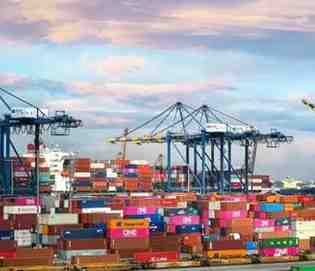
Logistics and Supply Chain
PG Certification Program in Logistics and Supply Chain Management
View Program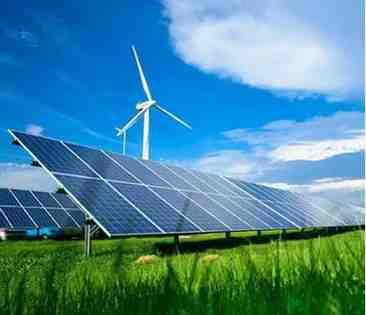



Latest Blogs
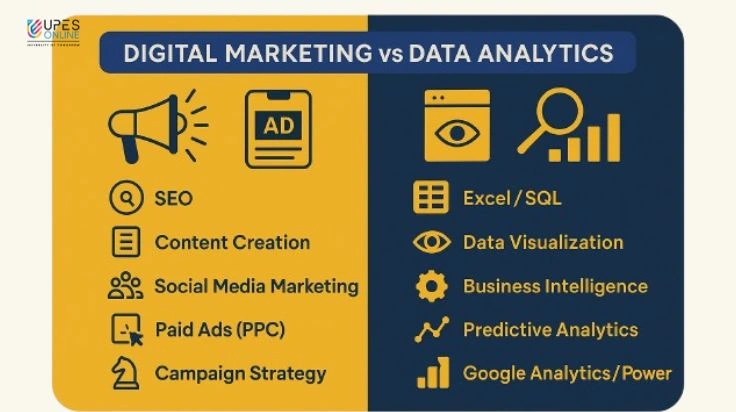
Digital Marketing vs Data Analytics: Which Career Should You Choose?
Battle of skills: Digital Marketing vs Data Analytics—compare 2025 salaries, skills & job roles. Expert tips to choose your future career path!
Read MoreJun 15, 2025 I 12 mins
Why Should I Choose UPES Online? 10 Reasons Why
Explore why UPES Online stands out in online education. Learn about flexible learning, UGC-approved degrees, expert faculty & credible online programs. Enroll now!
Read MoreAug 21, 2025 I 5 min
Can Distance Learning Fully Replace Traditional MBA Education? Challenges & Limitations
Find out if distance learning can truly replace a traditional MBA. Learn key challenges, limitations, expert opinion & insights.
Read MoreSep 2, 2025 I 4 mins
Online MBA Capstone Projects and the Importance They Hold
Know the importance of online MBA capstone projects. Learn how they build real-world skills, boost career opportunities, & add industry value.
Read MoreSep 7, 2025 I 5 mins
UPES Online MBA vs Other Top Universities: Why Students Prefer UPES
Compare UPES Online MBA with other top universities. Know why students prefer UPES online over others. Check fee, flexibility, faculty, ROI, & career scope.
Read MoreOct 1, 2025 I 7 mins






